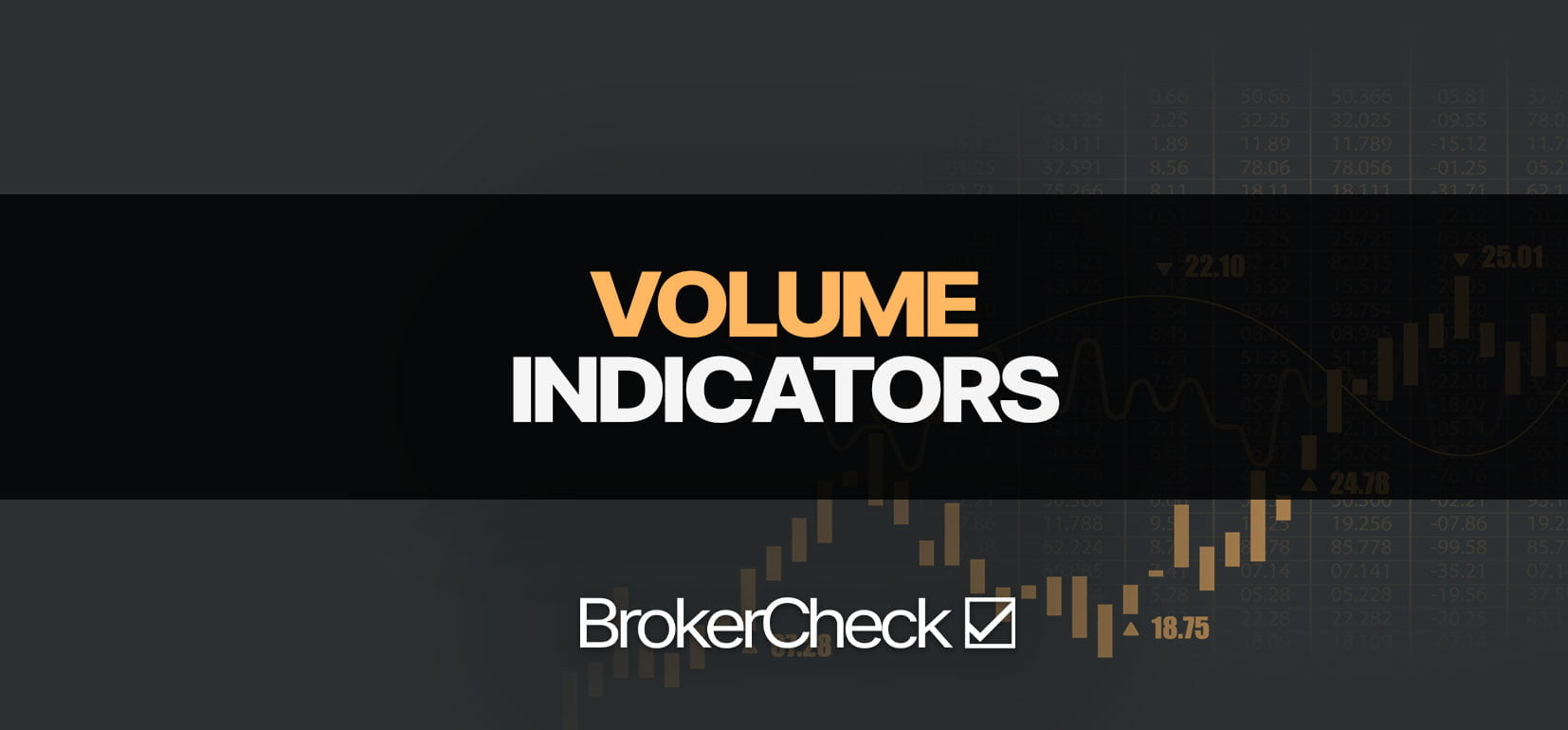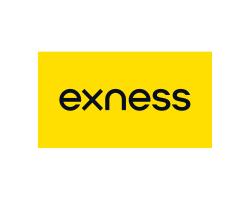1. Understanding Volume Indicators
Volume indicators are crucial tools in the arsenal of a successful trader or investor. They provide a window into the market’s inner workings, offering insights that are not immediately visible from price alone. A deeper understanding of volume indicators can reveal hidden strengths or weaknesses in a market, and potentially even signal upcoming price movements before they happen.
The most commonly used volume indicator is the ‘Volume Bar’. This is a simple histogram that displays the number of shares traded during each period. By comparing volume bars over time, you can gain insights into the market’s momentum. For example, if volume increases on up days and decreases on down days, it could suggest that buyers are in control.
Another popular volume indicator is the ‘On-Balance Volume (OBV)’. As per Investopedia, OBV is a cumulative total of volume, added or subtracted depending on whether the day’s price closed up or down. It was developed by Joe Granville in 1963, and its purpose is to use volume flow to predict changes in stock price.
A third common volume indicator is the ‘Chaikin Money Flow (CMF)’. Named after its creator, Marc Chaikin, CMF is designed to measure buying and selling pressure over a set period of time. The CMF fluctuates between -1 and +1. Positive values indicate buying pressure, while negative values indicate selling pressure.
‘Klinger Volume Oscillator (KVO)’ is yet another powerful volume indicator. It was developed by Stephen Klinger and it aims to predict long-term trends of money flow while being sensitive to short-term fluctuations.
Each of these volume indicators has its strengths and nuances, but what they all share is the ability to provide a unique perspective on the market’s movements. By combining volume indicators with other technical analysis tools, traders and investors can make more informed decisions, increasing their chances of success in the market. Remember, volume is often the first indicator to signal a potential change in trend, making it an invaluable tool in your trading toolkit.
1.1. The Concept of Volume Indicators
When delving into the financial world, understanding the concept of Volume Indicators is crucial. These are mathematical formulas used in the technical analysis of securities. They provide traders and investors with an assessment of the quantity of trading activity, which can give insight into market strength, trend health, and price movements.
The underlying theory is that significant changes in volume often precede substantial price shifts. Volume indicators can play an integral role in confirming trends and trend reversals. For instance, if the price of a stock rises and volume is also increasing, traders might infer that the upward trend is strong and expected to continue. Conversely, if the price is increasing but the volume is decreasing, it could signal a potential trend reversal.
Volume indicators are often used in conjunction with price analysis to confirm strength or weakness of a trend. They can be particularly useful in identifying breakouts. According to Bulkowski’s research, breakouts often lead to profitable trades when there is a rise in volume.
There are several types of volume indicators, including the On Balance Volume (OBV), Volume Rate of Change (VROC), and the Accumulation/Distribution Line. Each type has its unique calculation method and interpretation, but all seek to show the flow of volume in some form.
Understanding and effectively using volume indicators can greatly enhance your trading strategy, offering a deeper understanding of market dynamics. It’s like having a radar system uncovering what’s beneath the surface of price action. Thus, volume indicators are an indispensable tool in the arsenal of successful traders and investors.
1.2. How Volume Indicators Work
Volume indicators are a vital tool in the hands of a savvy trader or investor, offering a unique window into the intensity of trading activity. These analytical instruments are based on transaction amounts, and they help determine the strength of price movements. Volume indicators work by examining the number of shares or contracts that change hands over a specific time period.
The On-Balance Volume (OBV), for instance, adds up the volume on ‘up’ days and subtracts volume on ‘down’ days. It aims to show when financial assets are being accumulated or distributed, serving as a potential precursor for upcoming price swings. Another popular volume indicator is the Volume-weighted Average Price (VWAP), which gives the average price a security has traded at throughout the day, based on both volume and price. It is primarily used by technical analysts to identify market direction.
High volume, especially near important market levels, can be a sign of the start of a new trend, while low volume may indicate uncertainty or lack of interest. When combined with price analysis, volume indicators can help traders make more informed decisions. They can reveal what is happening behind the scenes and provide valuable clues about the potential future direction of price.
Remember, however, that volume indicators are just one piece of the puzzle. They should be used in conjunction with other tools and indicators for the most effective market analysis. (Investopedia, 2020)
While volume indicators can provide valuable insights, they are not infallible. As with all technical indicators, they should be used in conjunction with a comprehensive trading plan covering areas such as risk tolerance and investment objectives. Utilizing volume indicators as part of a balanced trading strategy can provide a deeper understanding of market dynamics and enhance your trading performance.
2. Types of Volume Indicators
Understanding the different types of volume indicators can significantly elevate your trading strategies and decision-making processes. The two primary types are On-Balance Volume (OBV) and Chaikin Money Flow (CMF).
On-Balance Volume (OBV), developed by Joe Granville, is a simple yet powerful indicator. It provides a cumulative total volume by adding the day’s volume to a running total when the security’s price closes up, and subtracts it if the security’s price closes down. This helps traders determine the public’s interest in a particular security. According to Investopedia, when the OBV increases relative to the security’s price, it indicates positive volume pressure that can lead to higher prices.
On the other hand, Chaikin Money Flow (CMF), developed by Marc Chaikin, is a volume-weighted average of accumulation and distribution over a specified period. The primary focus of the CMF indicator is to assess the strength of a trend or to anticipate reversals through observing volume flow. A positive CMF reading indicates buying pressure while a negative CMF indicates selling pressure. As Fidelity suggests, a bullish signal is given when CMF is positive and the fluctuating price is trending upwards, whereas a bearish signal is given when the CMF is negative and the fluctuating price is trending downwards.
By combining these two volume indicators, traders can gain a comprehensive view of market dynamics and potential trends, thereby enhancing their ability to make well-informed trading decisions.
2.1. On Balance Volume (OBV)
On Balance Volume (OBV) is a potent tool in the hands of a savvy investor. Designed by Joe Granville in the early 1960s, this unique volume-based indicator quantifies the cumulative flow of capital into and out of a particular security, thereby reflecting the conviction level of traders. The OBV operates on a simple principle: it adds a period’s volume to the OBV if the closing price was higher than the previous close, and subtracts the volume if the close was lower.
This powerful tool can offer valuable insights into market trends. An increasing OBV signifies that volume is increasing on upward price moves, which can indicate buyer dominance. Conversely, a decreasing OBV suggests that volume is increasing on downward price moves, indicative of seller dominance. This information can help traders anticipate potential market reversals and identify lucrative trading opportunities.
That said, it’s essential to remember that the OBV is not a standalone tool. For the best results, it should be used in conjunction with other technical analysis tools and indicators. Moreover, while it’s a beneficial tool, like all indicators, it’s not foolproof and should be used judiciously.
One of the key strengths of the OBV lies in its ability to generate divergence signals. When the OBV forms a series of ascending peaks and troughs while the price is forming descending peaks and troughs, this is known as a positive divergence. It can signal the potential for a bullish reversal. On the other hand, a negative divergence—when the OBV forms descending peaks and troughs while the price is forming ascending peaks and troughs—can suggest a potential bearish reversal.
Despite its apparent simplicity, the OBV is a versatile and robust tool that can significantly enhance your technical analysis toolkit. Its ability to reveal hidden market trends and foreshadow potential price reversals can be invaluable in the fast-moving world of trading. However, always remember to use it as part of a broader strategy, rather than in isolation, for the most accurate and effective results.
2.2. Volume Weighted Average Price (VWAP)
The Volume Weighted Average Price (VWAP) is a crucial tool for traders and investors, providing a comprehensive picture of the day’s trading activity. This volume indicator gives you the average price of a security over a specified timeframe, factoring in both price and volume. It’s computed by multiplying the trading volume at each price point by the price itself, then dividing the sum by the total volume. The result is a single dollar figure that represents the average price at which trades were executed during the period.
This volume indicator is particularly useful for those engaged in algorithmic trading or executing large orders. The VWAP can serve as a benchmark, helping traders to assess market performance over a specific period. If the current price is above the VWAP, it indicates that the security is trading at a higher price than average, and vice versa. This information can be extremely valuable when deciding on entry and exit points for trades.
However, it’s essential to note that the VWAP is a lagging indicator, meaning it calculates averages based on past data and may not accurately predict future price movements. It’s best used in conjunction with other technical analysis tools for a more rounded perspective of the market dynamics.
Institutional investors often use VWAP to execute their trades as close to the average price as possible, in order to minimize market impact and slippage. It’s also commonly used in pension plans and mutual funds for similar reasons. Furthermore, the VWAP can be an excellent tool for retail traders, providing insights into the market’s equilibrium price, which can be a valuable reference point for personal trading strategies.
Remember, like any other trading tool, the VWAP isn’t foolproof and should be used judiciously. It’s a tool that provides information and insight, but ultimately, successful trading relies on a well-rounded strategy that considers a variety of factors and indicators. As such, traders and investors should always conduct comprehensive research and consult with a professional financial advisor before making any trading decisions.
Sources:
CFA Institute. (2020). Volume Weighted Average Price (VWAP). Retrieved from https://www.cfainstitute.org/
Investopedia. (2020). Volume Weighted Average Price (VWAP). Retrieved from https://www.investopedia.com/
2.3. Money Flow Index (MFI)
The Money Flow Index (MFI) is a unique blend of volume and price analysis that offers traders and investors a comprehensive view of market activity. This oscillator moves between 0 and 100, providing insights into potential overbought and oversold conditions in the market. Analyzing the MFI can help in identifying potential price reversals and confirming trend strength.
The MFI is calculated by accumulating positive and negative money flow values (based on the typical price and volume for the period), then creating a money ratio. The result is then plugged into an equation that gives the MFI. The MFI takes into account both price and volume data, unlike some other oscillators which focus solely on the price. This makes the MFI a more robust indicator that can provide a broader view of market dynamics.
A high MFI value (above 80) typically indicates an overbought condition where the price could potentially reverse downwards, while a low value (below 20) suggests an oversold condition where the price could reverse upwards. However, like all indicators, the MFI is not infallible and should be used in conjunction with other tools and analysis methods.
It’s also important to note that, while the MFI can be a useful tool in trend identification and reversal prediction, it can sometimes give false signals in highly volatile markets. Therefore, a thorough understanding of market context is crucial when using the MFI to make trading decisions.
Divergence is another critical aspect to consider while analyzing the MFI. If the price forms a new high or low that isn’t mirrored in the MFI, it could signal a potential price reversal. For instance, if the price hits a new high but the MFI fails to reach a new high, it might be a bearish divergence indicating potential selling pressure. Conversely, if the price hits a new low but the MFI doesn’t reach a new low, it could be a bullish divergence indicating potential buying pressure.
In essence, the Money Flow Index is a versatile tool that can add significant value to a trader’s arsenal, offering insights into price momentum, trend strength, and potential reversals. However, as with any trading tool, it’s vital to use the MFI judiciously, in tandem with other indicators, and consider the overall market conditions.
3. Utilizing Volume Indicators for Trading Success
Volume indicators are crucial tools in a trader’s arsenal, providing insights into the level of activity in a market. These indicators can offer a unique perspective on market dynamics, and when used efficiently, can significantly enhance trading decisions.
One popular volume indicator is the On Balance Volume (OBV). This indicator adds volume on days when the price finishes higher and subtracts volume on days when the price finishes lower to provide a cumulative total. This can help traders to identify trends and reversals, as well as to confirm price movements. For instance, if the OBV is rising but the price isn’t, it could suggest that a price rise is imminent[1].
Another potent volume indicator is the Volume Rate of Change (VROC). This tool measures the rate of change in volume over a specified period. It can help traders to detect early signs of market reversals, as a sudden increase in VROC could indicate a surge in buying or selling pressure[2].
The Money Flow Index (MFI) is a volume-weighted version of the Relative Strength Index (RSI). It takes into account both price and volume to measure buying and selling pressure. A high MFI value (above 80) indicates overbought conditions, while a low value (below 20) indicates oversold conditions. This can help traders to take advantage of extreme price movements and potential reversals[3].
In essence, volume indicators are powerful tools that can enhance a trader’s ability to understand market sentiment and make more informed trading decisions. However, it’s essential to remember that they should be used in conjunction with other indicators and analysis methods to increase their efficacy.
[1] “Technical Analysis: On Balance Volume (OBV)”, Investopedia.
[2] “Volume Rate of Change (VROC) Indicator”, TradingView.
[3] “Money Flow Index (MFI)”, StockCharts.
3.1. Strategies for Volume Indicator Use
The value of volume indicators in the trading sphere is indisputable. These powerful tools provide insight into the liquidity of a stock, allowing traders to make informed decisions about their investments. But how can you maximize the effectiveness of these indicators? Here are three strategies to consider.
1. Confirming Trends: Volume can help confirm the validity of price trends. If a stock’s price is increasing and the volume is also on the rise, it’s clear that the upward trend is backed by substantial buying activity. Conversely, if a stock is trending downward with increasing volume, selling pressure is driving the price lower. This correlation between price and volume is a clear signal of the market’s sentiment towards a particular stock.
2. Spotting Reversals: Volume indicators can also be used to spot potential trend reversals. A sudden spike in volume could signal a possible price reversal. For instance, if a stock’s price is trending downward and there’s a sudden surge in volume, it could mean that buyers are stepping in, indicating a potential trend reversal.
3. Identifying Breakouts: Breakouts occur when a stock’s price moves above a certain level of resistance or below a level of support. Volume indicators can provide early warning signs of these breakouts. If a stock’s volume is significantly high, it could suggest that a breakout is imminent.
Remember, while these strategies can enhance your trading activity, they are not foolproof. It’s crucial to combine volume indicators with other technical analysis tools to make comprehensive trading decisions. Volume should never be used in isolation but should always be used in conjunction with other indicators and techniques.
3.2. Pitfalls to Avoid When Using Volume Indicators
The world of trading can be a treacherous landscape, fraught with false signals and misleading indicators. One such area where traders often stumble is the use of volume indicators. Volume indicators are a critical tool in a trader’s arsenal, providing insights into market sentiment and potential price reversals. However, relying on them without understanding their limitations can lead to costly mistakes.
Firstly, the common pitfall is assuming volume indicators are foolproof. No indicator is perfect, and volume indicators are no exception. Traders often misinterpret spikes in volume as a definitive sign of an impending price reversal. However, high trading volume can also signal the continuation of a current trend. In fact, according to a study by the Journal of Finance, high trading volume is more often associated with the continuation of the current trend than a reversal.
Another common error is failing to consider the broader market context. Volume indicators should never be used in isolation. They are most effective when used in conjunction with other technical analysis tools. For instance, a sudden increase in volume combined with a breakout from a consolidation pattern may be a more reliable buy signal.
Lastly, traders often fall into the trap of over-reliance on volume indicators. While these tools can provide valuable insights, they should not be the sole basis for trading decisions. A well-rounded trading strategy should incorporate a mix of fundamental analysis, technical analysis, and risk management techniques.
Remember, volume indicators are not a crystal ball. They can provide insights into market sentiment and potential price movements, but they are not infallible. Traders who understand and navigate these pitfalls are more likely to succeed in the volatile world of trading.
3.3. Case Studies of Successful Volume Indicator Use
A striking example of successful volume indicator use is seen in the case of Paul Tudor Jones, a well-known commodities trader. In the infamous Black Monday of 1987, Jones used volume indicators along with price action to anticipate the market crash. He was able to short the stock market, which led to a triple-digit return for his fund that year1.
In another case, Richard Wyckoff, a pioneer in the field of technical analysis, developed the Wyckoff Method. This method heavily relies on volume indicators for its principles. Wyckoff’s approach involved studying the relationship between price trends and volume, and determining potential price breakouts. His methods are still widely used today and have been instrumental in the success of many traders2.
Lastly, the On Balance Volume (OBV) indicator, developed by Joe Granville, is a prime example of volume indicator use. This tool essentially adds up the volume on ‘up’ days and subtracts volume on ‘down’ days. When the OBV increases, it shows that buyers are willing to step in and purchase at higher prices. This was a revolutionary concept at the time and has since been adopted by many successful traders. For example, Granville himself used the OBV to correctly predict the 1974 stock market crash3.
1 – “Paul Tudor Jones: Earn Your First Billion Dollars Using The Proven Systems of the Top Hedge Fund Billionaires” by Stan Miller
2 – “Studies in Tape Reading” by Richard Wyckoff
3 – “New Strategy of Daily Stock Market Timing for Maximum Profit” by Joseph E. Granville











